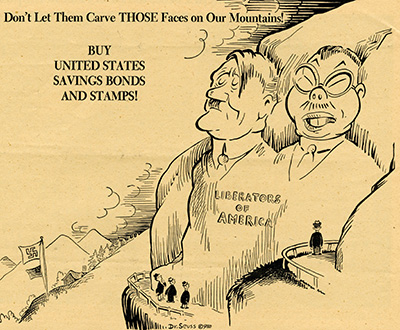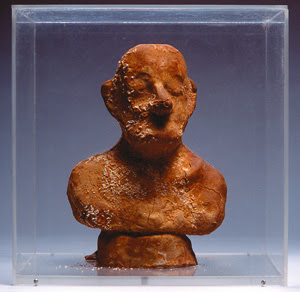by Stephen J. Gertz
Crockett writes in full:
Gentlemen your favor of the 20th Inst. came safe to hand and I saw Mr. Asgood and obtained his permission agreeable to your request and here enclose his letter to you [not present] which I hope will be agreeable to your wish. I have written and taken to Mr. [William] Clark 55 pages of my new Book. Mr. Clark sais it will do excelent for him to work upon and he sais he will make you a Book that will flll expectation. Excuse hast I am your obt servt David Crockett.
A Narrative of the Life of David Crockett was a best-seller. The sequel, published a year later in 1835, also enjoyed a wide success, with subsequent editions in 1837, 1840, 1845 and 1848. It records Crockett's “Extended Tour” for three weeks, April 25 - May 13 (or 14), 1834, parading himself before admiring throngs in Baltimore, Philadelphia, New York, Jersey City, Newport, Boston, Lowell, Providence and Camden to promote the Narrative… It was the blunder of his political career. Running for reelection to Congress, the tour, organized by the Whigs, attempted to parade Crockett before the masses, exploiting his popularity. His constituents in Tennessee's 12th district did not, apparently, appreciate Crockett courting the favor of Northeasterners and he narrowly lost the election.
Image courtesy of Profiles In History, with our thanks.
___________
___________
An extremely rare signed autograph letter by nineteenth century American folk hero, frontiersman, and politician, Davy Crockett (1786-1836), has come to market. Written from Washington D.C. ("Washington City") on December 24, 1834 to Messrs. E. L. Carey & A. Hart, Crockett’s Philadelphia publishers, it is being offered by auctioneer Profiles In History in its Rare Books and Manuscripts sale on July 10, 2013. It is estimated to sell for $20,000 - $30,000.
Within, Crockett writes about his new book, An Account of Col. Crockett’s Tour to the North and Down East, the sequel to his A Narrative of the Life of David Crockett (1834). The letter proves that he, though unschooled and unconcerned about it, took an active role in the composition of his own works.
Within, Crockett writes about his new book, An Account of Col. Crockett’s Tour to the North and Down East, the sequel to his A Narrative of the Life of David Crockett (1834). The letter proves that he, though unschooled and unconcerned about it, took an active role in the composition of his own works.
Crockett writes in full:
Gentlemen your favor of the 20th Inst. came safe to hand and I saw Mr. Asgood and obtained his permission agreeable to your request and here enclose his letter to you [not present] which I hope will be agreeable to your wish. I have written and taken to Mr. [William] Clark 55 pages of my new Book. Mr. Clark sais it will do excelent for him to work upon and he sais he will make you a Book that will flll expectation. Excuse hast I am your obt servt David Crockett.
A Narrative of the Life of David Crockett was a best-seller. The sequel, published a year later in 1835, also enjoyed a wide success, with subsequent editions in 1837, 1840, 1845 and 1848. It records Crockett's “Extended Tour” for three weeks, April 25 - May 13 (or 14), 1834, parading himself before admiring throngs in Baltimore, Philadelphia, New York, Jersey City, Newport, Boston, Lowell, Providence and Camden to promote the Narrative… It was the blunder of his political career. Running for reelection to Congress, the tour, organized by the Whigs, attempted to parade Crockett before the masses, exploiting his popularity. His constituents in Tennessee's 12th district did not, apparently, appreciate Crockett courting the favor of Northeasterners and he narrowly lost the election.
 |
| Crockett, member of the U.S. House of Representatives. |
Upon his return to his home state he said, "I told the people of my district that I would serve them as faithfully as I had done; but if not, they might go to hell, and I would go to Texas." No word where Tennesseans wound up but Crockett definitely went to Texas, where less than a year after the first edition of the Tour appeared, he was killed at the Battle of the Alamo, March 6, 1836.
Crockett prided himself on his lack of education - he once said that correct spelling was “contrary in nature” and grammar was “nothing at all." This letter confirms that, indeed, Crockett was a very bad speller an' his grammar weren't so good. It also confirms that Crockett, however awkwardly, wrote his own books - with the aid of a “ghost-writer,” U.S. Representative from Pennsylvania William Clark (1774-1851), who, in this context, may be thought of rather as Crockett's editor.
As far as Crockett’s involvement in writing the Tour James Atkins Shackford wrote:
“David did not, of course, write the Tour, but merely helped to collect Whig notes and newspaper clippings recording ghost written speeches. Another man wrote the book from these ‘scissors and paste-pot’ gleanings. A few portions bear his touch, but most is so inferior, so a affectedly ‘backwoodsie,’ so full of sham vernacular and impossible harangue (though the views expressed are the anti-Jackson Whig ones of his letters and Congressional speeches) that the Tour richly deserved the oblivion that it promptly received” (David Crockett: The Man and the Legend, 1956).
Crockett hoped to have the book completed by the first of January 1835 (or early in February), and rushed to get pages to Clark for correction and editing so that the publisher could begin setting the type. There was another reason for his desire to move the project along with all due speed: Crockett owed $300, and he hoped to be able to ask for an advance. The Tour came off the press in late March 1835.
Crockett prided himself on his lack of education - he once said that correct spelling was “contrary in nature” and grammar was “nothing at all." This letter confirms that, indeed, Crockett was a very bad speller an' his grammar weren't so good. It also confirms that Crockett, however awkwardly, wrote his own books - with the aid of a “ghost-writer,” U.S. Representative from Pennsylvania William Clark (1774-1851), who, in this context, may be thought of rather as Crockett's editor.
As far as Crockett’s involvement in writing the Tour James Atkins Shackford wrote:
“David did not, of course, write the Tour, but merely helped to collect Whig notes and newspaper clippings recording ghost written speeches. Another man wrote the book from these ‘scissors and paste-pot’ gleanings. A few portions bear his touch, but most is so inferior, so a affectedly ‘backwoodsie,’ so full of sham vernacular and impossible harangue (though the views expressed are the anti-Jackson Whig ones of his letters and Congressional speeches) that the Tour richly deserved the oblivion that it promptly received” (David Crockett: The Man and the Legend, 1956).
Crockett hoped to have the book completed by the first of January 1835 (or early in February), and rushed to get pages to Clark for correction and editing so that the publisher could begin setting the type. There was another reason for his desire to move the project along with all due speed: Crockett owed $300, and he hoped to be able to ask for an advance. The Tour came off the press in late March 1835.
 |
| Davy Crockett by John Gadsby Chapman. |
Crockett remains one of America's great folk heroes and autograph material by him is highly sought-after yet exceedingly scarce in the marketplace, hence the five-figure estimate for this note.
Coonskin hat not included with letter.
__________Coonskin hat not included with letter.
Image courtesy of Profiles In History, with our thanks.
___________
___________












.jpg)













































































